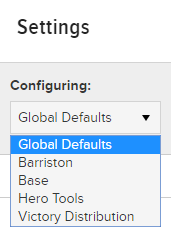 Working with guest access on the website
Working with guest access on the website
Administrators can configure Optimizely B2B Commerce websites to allow for unregistered users or guests to access or checkout from websites. The process of enabling this functionality involves just a few clicks, but the real challenge is in deciding if guest access or checkout is the right strategy for the website. There are a number of factors to consider when making this decision and the rationale and conclusions are not the same for every website.
To start, there is a common belief that enabling guest access or guest checkout will increase the number of transactions on a site, as customers can avoid the minor hassle of creating accounts. Although this can be true, there are also some potential downsides to allowing guests to checkout from a site without registering. So when making the decision to allow or not allow guests and guest checkout, consider the following points:
- Returns, exchanges, or refunds can become more complicated without an associated account.
- Allowing guests can make reviewing, modifying, or tracking orders more difficult.
- Guests will not have the option to reorder previous orders or make use of lists.
- Guests do not have any history, so there is a loss of data which could help drive future sales, possible training, or other opportunities.
The settings listed below can be used to control various aspects of the guest experience. At a minimum, Enable Guest Checkout and Allow Account Creation need to be set to YES to allow guest access.
| Settting Name | Value Options | Description |
|---|---|---|
| Enable Guest Checkout | Yes/No | If Yes, the Checkout as Guest button is displayed on the sign in page - allowing purchases to be made without signing into a user account. The default value is Yes.
Guests cannot view any My Account features, such as order history or quotes. |
| Website Access | NoSignInRequired (default), SignInRequiredToBrowse, SignInRequiredToAddToCart, SignInRequiredToAddToCartOrSeePrices |
Determines what guests can access before being prompted to sign in. A Pricing_SignInForPrice message displays if a user is not signed in and the?Website Access setting is set to Sign in required to add to cart or see prices. |
| Allow Account Creation | Yes/No |
If Yes, guests can create new accounts on the storefront. Default value: Yes Enabling this setting should be considered carefully, as it can pollute the user database and some websites require specific user information to function correctly. |
| Guest ERP Customer | Drop-down (select a value); blank by default |
If a customer is selected, the bank code, customer type, end user type, ship code, terms, code, default credit limit, ERP BillTo Number, and ERP ShipToNumber are copied from that customer record for new customer records created during guest checkout. If no record is selected for the setting, the customer defaults defined in the account management settings are used for customer records created during guest checkout. If you are using real time pricing, the system needs to know what pricing to show, so?if there is no default selected here, the system does not show any pricing. |
| Allow Order Status Lookup | Yes/No | If "Yes," there is a "Check Your Order Status" link at the top of order confirmation emails that links to the Check Your Order Status > Order Detail. The order confirmation number also links to the page. |
| Allow Guest Order Lookup | Yes/No | If "Yes," allows users to check order status without logging in to the website. Website-specific. Requires setting Real Time Order History = NO. |
Updating the settings
These settings can be controlled globally or can be unique per website. To make the setting website specific, before changing the value, select the target website from the Configuring menu on the left side of the screen.
- Go to Admin Console > Administration > System > Settings.
- Search for the Setting name.
- Update the field value as necessary.
- Click Save.